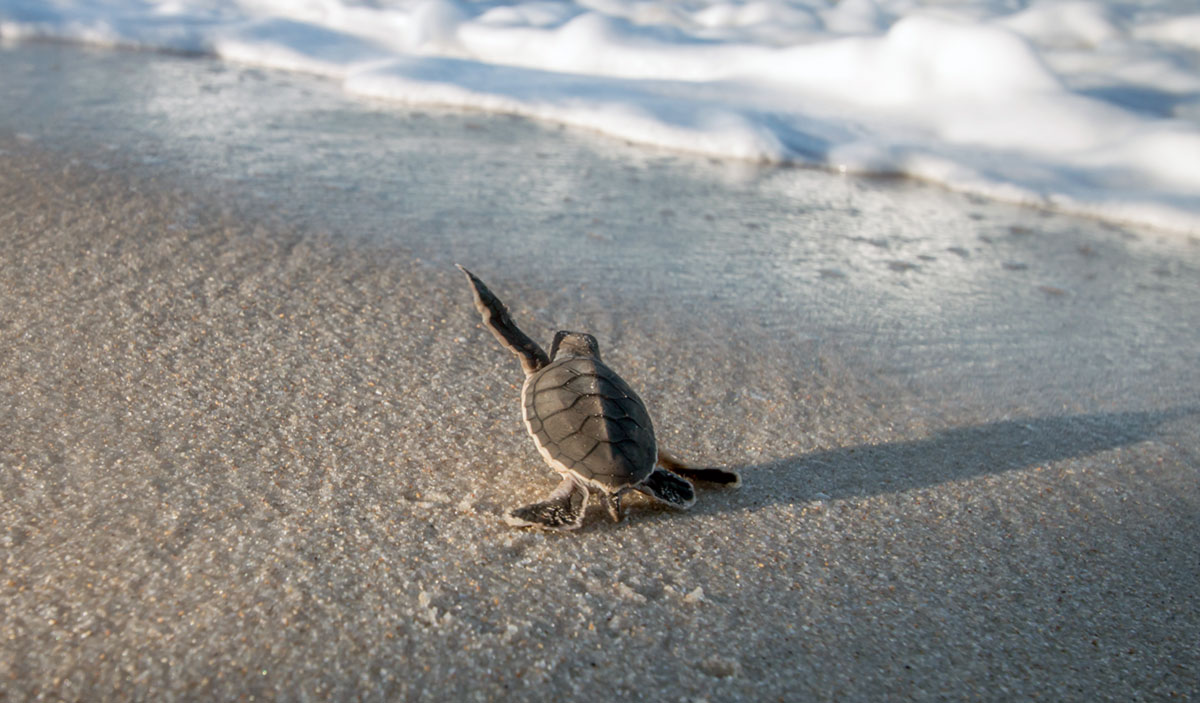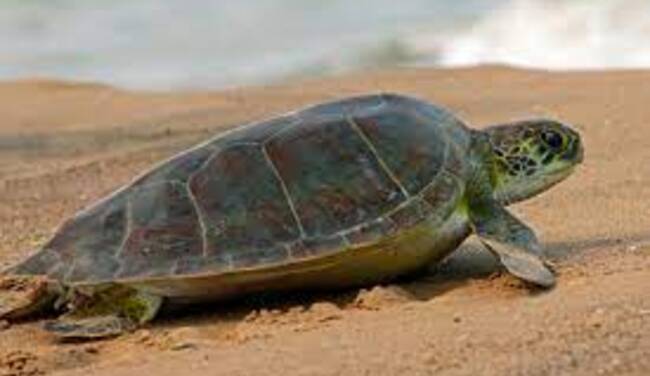
Turtle Nesting Season Starts at La Paz Malecon
August 09, 2021
During the turtle nesting season, two species of olive ridley turtles arrived at the city of La Paz beach in recent days to nest and lay their eggs. Francisco Gómez Daz, Executive Director of the Whale Museum, outlines the causes of these marine animals’ unusual behavior and makes recommendations to maintain the place so that the turtles do not face any problems when nesting.
According to Francisco Gómez, sea turtles nest on the beaches of El Mogote and the La Paz boardwalk every year because the species always returns to the same beach where they were born to lay their eggs, an event known as Philopatry.
“The fact that they arrive at these beaches has to do with the place where they were born; this condition or event’s name is Philopatry and it describes the faithfulness to the motherland; in other words, they return to the place where they were born to complete their life cycle.”

He went on to say that these occurrences can happen up to three times a year, and that the incubation period for olive ridley turtles is 45 days on average.
You may also like: 2021-2022 sea turtle season started in Puerto Vallarta
Francisco Gómez advised people that if they see a turtle nesting on the malecón, they should keep a safe distance and not try to intervene in the cycle. Instead, they should call 911 and report the location so that PROFEPA, in collaboration with researchers of these species and with permission from the Dirección General de Vida Silvestre, can protect the nest with a fence and a sign warning the community.
He explained that near the hatching date, the nest managers will go to supervise the safe return of the hatchlings to the water, with as little handling as possible.
Once a sector or nesting region has been recognized, it is vital to collect data for the community collective and, if feasible, designate it with a permanent sign indicating that it is a common turtle nesting location, in order to avoid urban activities that disrupt this environment.
“It will always be preferable to coexist with the species that comprise our magnificent natural heritage than to have an invasive or badly planned urban development,” he concluded.
With information from Tribuna de Los Cabos.
More News
------ADVERTISEMENT------
------ADVERTISEMENT------
------ADVERTISEMENT------
------ADVERTISEMENT------
